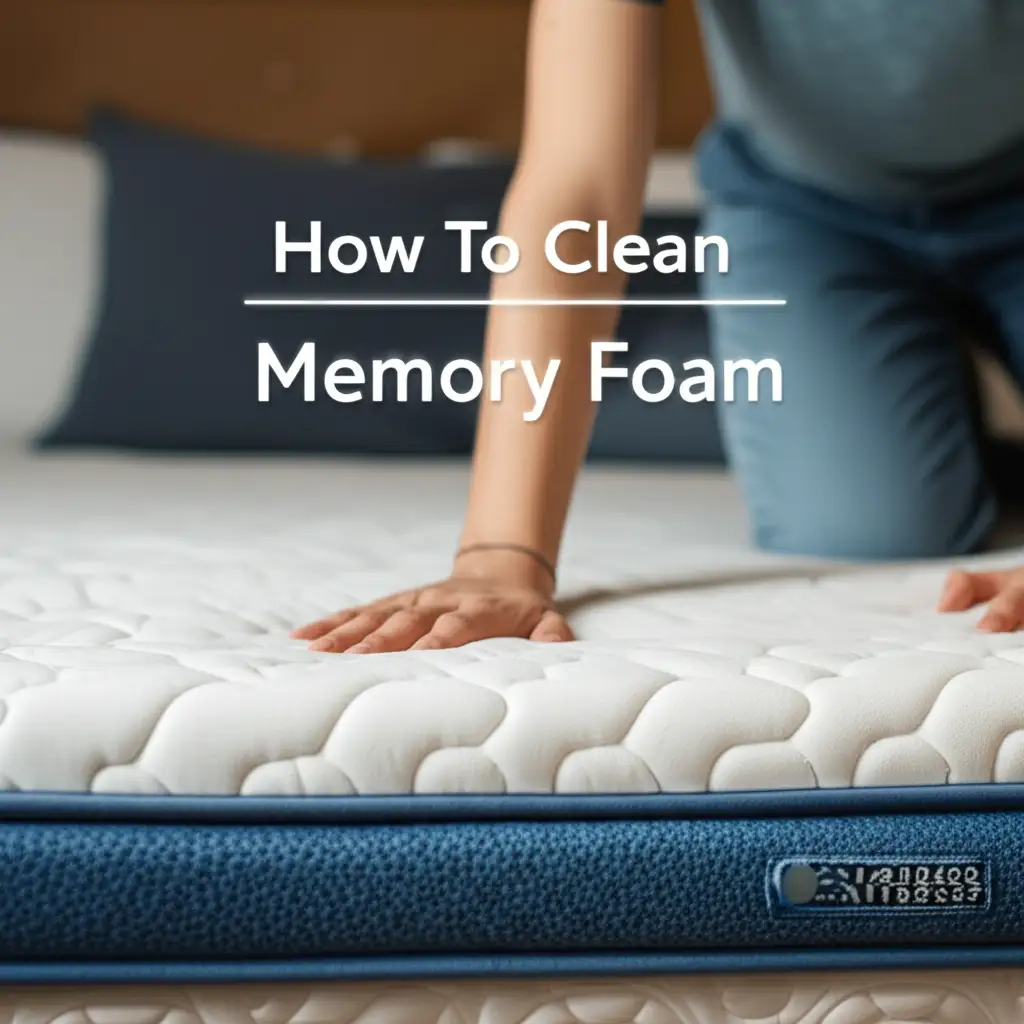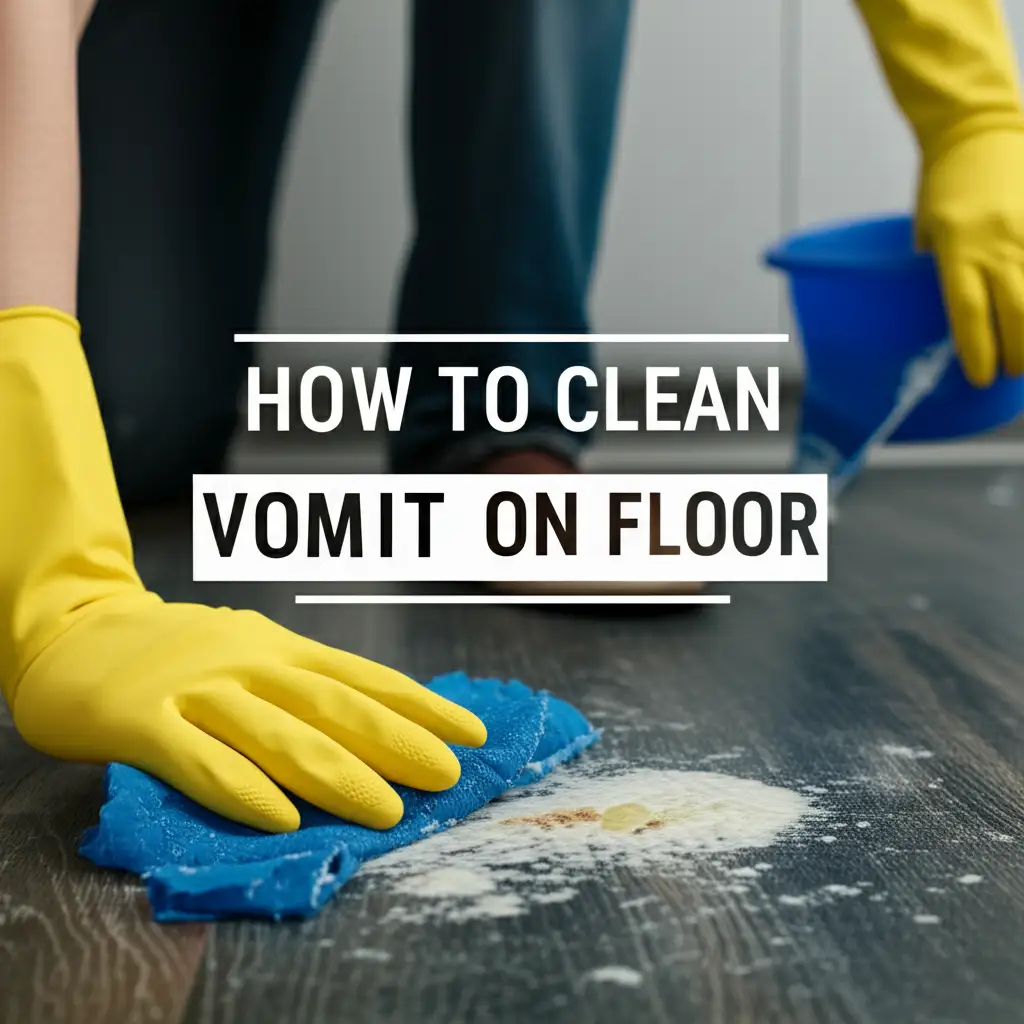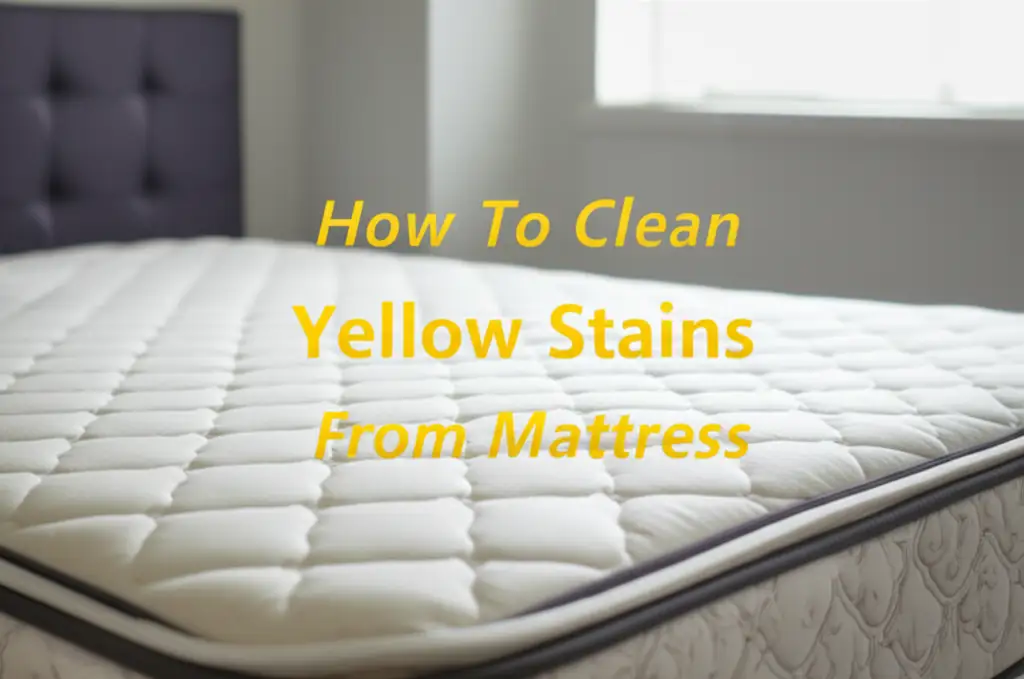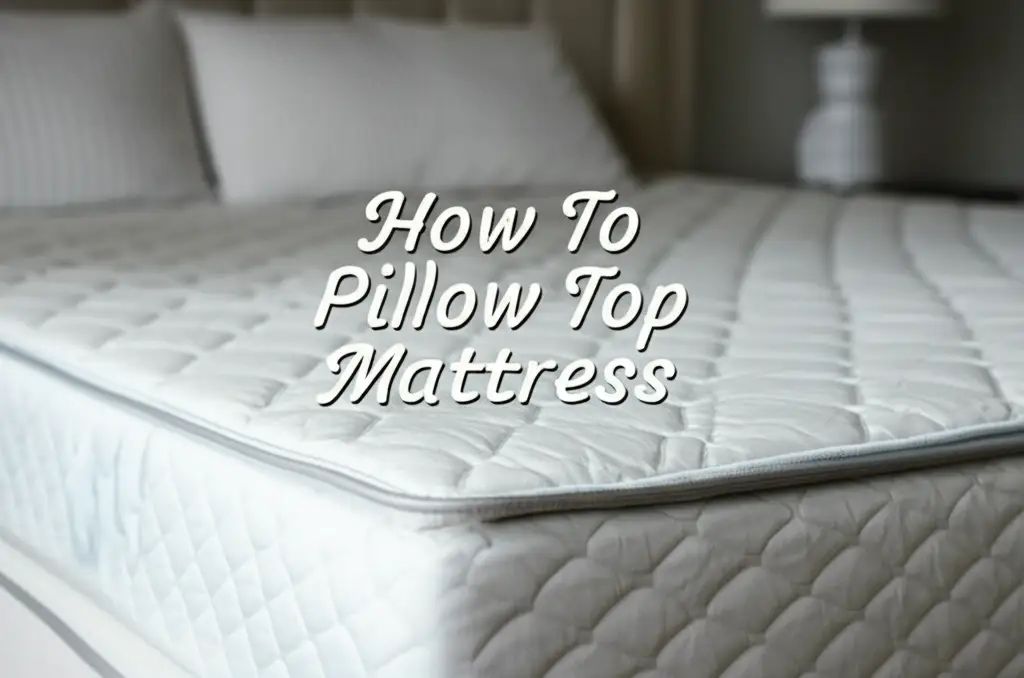· Home Cleaning · 17 min read
How To Clean Memory Foam Mattress

How to Clean Your Memory Foam Mattress Easily
Waking up feeling refreshed is a wonderful thing. But what if your mattress feels less than fresh? Your memory foam mattress, while a comfort haven, collects dust, sweat, and allergens over time. This build-up affects sleep quality and hygiene.
Knowing how to properly clean a memory foam mattress is important. Unlike traditional spring mattresses, memory foam needs special care. You cannot just soak it in water. This guide provides simple steps for effective cleaning.
We will cover everything from routine care to tackling tough stains and odors. You will learn the right tools and techniques to keep your mattress pristine. A clean mattress supports better sleep and a healthier home.
Takeaway
- Memory foam needs gentle, spot cleaning; do not saturate it.
- Vacuum regularly to remove dust and allergens.
- Use baking soda for odor elimination and mild cleaning solutions for stains.
- Ensure the mattress is completely dry to prevent mold growth.
Clear, Concise Answer
To clean a memory foam mattress, vacuum it regularly to remove dust. For spills and stains, gently blot with a damp cloth and a mild cleaning solution. Apply baking soda to absorb odors. Always allow the mattress to air dry completely before making the bed.
Understanding Memory Foam Mattress Care
Memory foam mattresses offer amazing comfort and support. They contour to your body, giving you a restful night. However, their unique structure means they need specific cleaning methods. You cannot treat them like a traditional spring mattress.
Memory foam is dense and absorbs liquids easily. This absorption can lead to problems like mold or mildew if the mattress does not dry fully. Water can also break down the foam’s structure. This damages its integrity and shortens its lifespan. So, deep cleaning means more than just washing.
Our goal is to clean without causing damage. We focus on surface cleaning and spot treatment. This method keeps your mattress fresh. It also protects the foam material. Proper care extends the life of your investment.
Why Memory Foam Is Different
Memory foam consists of viscoelastic polyurethane foam. This material reacts to heat and pressure. It creates a personalized sleeping surface. The closed-cell structure makes it resistant to dust mites compared to traditional mattresses. Still, it collects dead skin cells, sweat, and body oils.
It is important to avoid harsh chemicals. Bleach or strong detergents can degrade the foam. They can also leave harmful residues. Gentle, natural cleaners are best for this material. They ensure the mattress remains safe for sleep.
You must never put a memory foam mattress in a washing machine. This applies even to smaller foam items. For instance, if you want to know how to clean a memory foam pillow, you follow similar careful steps. It will ruin the foam and void any warranty.
Gathering Your Cleaning Supplies
Before you start cleaning your memory foam mattress, gather all the necessary items. Having everything ready makes the process smoother and more efficient. Using the correct tools also helps protect your mattress. You do not want to damage the delicate foam material.
You probably have most of these supplies at home already. This makes memory foam mattress cleaning simple and accessible. Prepare your cleaning station before you begin. This prevents interruptions during the cleaning process.
Always read your mattress care label first. Some manufacturers provide specific instructions. Following these instructions helps maintain your warranty. It also ensures you use approved methods for your particular mattress model.
Essential Tools and Products
Here is a list of what you will need for a thorough clean:
- Vacuum cleaner with an upholstery attachment: This is your main tool for dry debris.
- Mild liquid detergent: Choose one without harsh chemicals or dyes. Dish soap works well.
- White vinegar: A natural disinfectant and odor neutralizer.
- Baking soda: Excellent for absorbing moisture and odors.
- Clean cloths or sponges: Several are needed for blotting and cleaning. Microfiber cloths are ideal.
- Spray bottle: For applying diluted cleaning solutions.
- Fan or hairdryer: To aid in drying the mattress quickly.
- Optional: Enzyme cleaner: Useful for biological stains like urine or vomit.
Avoid using too much water. Remember, memory foam does not like to get wet. Damp cloths are better than soaking ones. This list helps you perform a good cleaning.
Step-by-Step Guide to Deep Clean Your Memory Foam Mattress
A deep clean for your memory foam mattress does not happen often. Most people do this a few times a year. It depends on how much the mattress gets used. This process helps remove embedded dirt and refresh the bed. Follow these steps carefully to ensure a clean and healthy sleep surface.
Always make sure you have enough time for the mattress to dry. Drying is the most crucial part of cleaning memory foam. A damp mattress can quickly develop mold. Plan your cleaning for a sunny day if possible.
Removing Dust and Debris
First, strip your bed completely. Remove all sheets, pillowcases, and mattress protectors. Now, your mattress is bare. Take your vacuum cleaner with the upholstery attachment.
Thoroughly vacuum the entire surface of the mattress. Go over it multiple times. Pay extra attention to seams and crevices. These areas often collect dust, dead skin cells, and other debris. Flip the mattress if it is flippable, and vacuum the other side as well. This initial vacuuming removes loose dirt. It prepares the surface for more targeted cleaning.
This step is crucial for overall hygiene. Regular vacuuming prevents buildup. It is a simple way to maintain your mattress between deep cleans.
Spot Cleaning Stains
Next, address any visible stains on your mattress. Memory foam can get stains from sweat, food, drinks, or bodily fluids. Act quickly when a spill happens. Fresh stains are always easier to remove.
Mix a small amount of mild liquid detergent with water in a spray bottle. You can use one teaspoon of detergent per cup of water. Lightly spray the stained area. Do not oversaturate the foam. Use a clean cloth to gently blot the stain. Work from the outside of the stain inward. This prevents the stain from spreading.
Rinse your cloth often. Continue blotting until the stain lifts. For stubborn spots, a mixture of white vinegar and water (1:1 ratio) can also help. Blot with this solution. Then, follow with a damp cloth with plain water to “rinse” the area. Learn more about how to clean stains from a mattress in general.
Deodorizing with Baking Soda
After spot cleaning, it is time to deodorize. Baking soda is amazing for absorbing odors. It neutralizes smells naturally. Sprinkle a generous layer of baking soda over the entire mattress surface. You can use a sifter for an even layer.
Let the baking soda sit for several hours, or even a full day. The longer it sits, the more odors it will absorb. Open windows to let fresh air circulate in the room during this time. This helps air out the mattress. This step is particularly effective after dealing with spills. It helps get rid of lingering smells.
Once the baking soda has done its work, vacuum it all up. Use your vacuum’s upholstery attachment again. Make sure you remove all the powder. The mattress should now smell much fresher.
Drying the Mattress Thoroughly
Drying is the most critical step. Memory foam must be completely dry before you put sheets back on. If moisture remains, mold and mildew can grow inside the mattress. This creates health risks and damages the foam.
Use a fan to direct airflow over the mattress. You can also use a hairdryer on a cool setting. Hold the hairdryer a few inches away from the surface. Move it constantly. This helps speed up the drying process. Do not use heat. Heat can damage the foam.
Give the mattress plenty of time to air dry. This might take several hours. Even overnight. Feel the surface to check for any damp spots. Only make the bed when you are absolutely sure it is dry. This step ensures your mattress stays healthy and lasts longer.
Targeting Common Mattress Stains
Certain stains appear more often on mattresses. Knowing how to deal with them specifically saves time and effort. Memory foam needs gentle handling for all stain types. Always blot; never rub. Rubbing pushes the stain deeper into the foam.
Quick action is your best friend when it comes to stains. The faster you address a spill, the easier it will be to remove. Have your cleaning supplies ready. This allows you to react instantly when accidents happen.
Remember that extensive liquid exposure is bad for memory foam. Use minimal cleaning solution. Always aim to lift the stain, not saturate the area.
Urine Stains
Urine stains are common, especially in homes with children or pets. They leave both a visual stain and a strong odor. To clean urine from a memory foam mattress, act quickly. Start by blotting up as much liquid as possible with clean towels. Press down firmly to absorb moisture.
Mix a solution of equal parts white vinegar and water in a spray bottle. Vinegar helps neutralize the ammonia in urine. Lightly spray the affected area. Let it sit for 5-10 minutes. Blot the area dry with a clean cloth. Repeat if needed.
After the stain is gone, sprinkle a generous amount of baking soda over the entire area. Let it sit for several hours, or overnight, to absorb remaining odors and moisture. Vacuum up the baking soda. You can find more detailed advice on how to clean pee off a mattress if needed.
Vomit Stains
Vomit stains on a mattress need immediate attention. This helps prevent permanent staining and odors. First, wear gloves. Scrape off any solid material carefully using a dull knife or spoon. Discard it in a sealed bag.
Blot up as much liquid as possible with paper towels or old cloths. Press down firmly. Mix a solution of one part mild enzyme cleaner to two parts water. Enzyme cleaners break down organic matter effectively. Spray the solution lightly onto the stain. Let it sit for 15-20 minutes.
Blot the area repeatedly with a clean, damp cloth until the stain disappears. Follow with a plain water rinse using a fresh damp cloth. Apply baking soda generously afterward. Let it sit for several hours to absorb moisture and odors. Vacuum thoroughly. For comprehensive instructions, review how to clean vomit from mattress.
Yellow Stains
Yellow stains often result from sweat, body oils, or natural aging of the foam. These can be trickier to remove but are not impossible. For yellowing, create a paste using baking soda and a small amount of hydrogen peroxide. Mix it until it forms a thick, spreadable consistency.
Apply this paste directly to the yellow stains. Gently rub it in with a soft brush or cloth. Let the paste sit on the stain for 30-60 minutes. The hydrogen peroxide helps lighten the discoloration. Avoid using too much peroxide as it can damage some fabrics.
After it sits, use a clean, damp cloth to blot and wipe away the paste. Continue blotting until no residue remains. Finish by sprinkling baking soda over the entire area to absorb any remaining moisture and odors. Vacuum it all once dry. More tips are available on how to clean yellow stains from mattress.
Removing Odors from Your Mattress
Even without visible stains, your memory foam mattress can accumulate odors. Sweat, body oils, and environmental factors contribute to this. A fresh-smelling mattress is essential for good sleep. Thankfully, odor removal is often simpler than stain removal.
Baking soda is your best friend here. It is a natural deodorizer. It absorbs smells instead of just masking them. Regular deodorizing keeps your mattress feeling clean and inviting.
Air circulation is also key to preventing odors. Ensure your bedroom is well-ventilated. This helps moisture evaporate. It also prevents stale air from settling into your mattress.
Baking Soda for General Odor Removal
The simplest and most effective way to remove general odors is with baking soda. Strip your bed completely. Sprinkle a generous layer of baking soda over the entire surface of the memory foam mattress. Do not be shy with the amount. Ensure full coverage.
Let the baking soda sit for at least 4-6 hours. For very strong odors, leave it on overnight, or even for 24 hours. The baking soda works by absorbing moisture and odors deep within the foam. Open windows during this time to air out the room.
After the waiting period, vacuum up all the baking soda using an upholstery attachment. You should notice a significant improvement in the mattress’s smell. This method can be done monthly or whenever you feel your mattress needs a refresh.
Vinegar Spray for Persistent Smells
For more persistent or specific odors, a white vinegar spray can be very effective. Vinegar is a natural disinfectant and powerful odor neutralizer. Mix equal parts white vinegar and water in a spray bottle.
Lightly mist the entire surface of your memory foam mattress with this solution. Do not saturate the mattress. A fine mist is enough. The vinegar smell will be noticeable at first. Do not worry; it dissipates as it dries.
Let the mattress air dry completely in a well-ventilated room. You can use a fan to speed up the drying process. Once dry, the vinegar smell will be gone. It will leave your mattress smelling fresh. You can follow up with baking soda if you wish.
Quick Tips for Daily Mattress Maintenance
Cleaning your memory foam mattress should not be a daunting task. Regular maintenance helps keep it in good condition. These small habits prevent major issues from developing. They also prolong the life of your mattress.
Consistent care saves you from bigger cleaning jobs later on. Think of it as a proactive approach to mattress hygiene. A little effort each week or month goes a long way. This ensures your sleep environment stays healthy and comfortable.
These tips are easy to incorporate into your routine. They do not require special tools or much time. They are simple habits that make a big difference.
Regular Vacuuming
Make vacuuming your mattress a routine. At least once a month, strip your bed down. Use the upholstery attachment on your vacuum cleaner. Go over the entire surface of your memory foam mattress.
This simple step removes dust mites, dead skin cells, and other allergens. It also picks up any small debris that might accumulate. Regular vacuuming prevents these particles from embedding deep into the foam. It keeps your mattress fresh between deeper cleans.
Vacuuming is a quick task. It takes only a few minutes. This small effort contributes greatly to a cleaner sleep environment.
Using a Mattress Protector
A high-quality mattress protector is a game-changer. It acts as a barrier between you and your mattress. Protectors guard against spills, sweat, allergens, and dust mites. Look for a waterproof and breathable protector.
A good protector can be removed and washed easily. This makes cleaning much simpler. Instead of cleaning the mattress itself, you just wash the protector. This saves your memory foam from direct exposure to moisture and stains.
Invest in a protector when you buy your mattress. It is a worthwhile investment. It extends the life of your mattress. It also keeps it much cleaner with less effort.
Airing Out Your Mattress
Memory foam mattresses benefit from regular airing out. Once a week, pull back your sheets and blankets. Let your mattress breathe for a few hours. This allows trapped moisture to evaporate.
Moisture can accumulate from body heat and sweat. Letting it air out prevents mildew and odors. If possible, open a window in your bedroom. Fresh air circulation is beneficial.
This habit is especially important if you live in a humid climate. It keeps your mattress dry and fresh. A well-aerated mattress provides a healthier sleeping surface.
Drying Your Memory Foam Mattress Properly
Proper drying is the most crucial step when cleaning a memory foam mattress. If your mattress remains damp, even slightly, it becomes a breeding ground for mold and mildew. These can cause unpleasant odors and health issues. Mold also damages the foam material permanently.
Always ensure the mattress is completely dry before putting sheets back on. This takes patience but is essential. Rushing this step can lead to significant problems down the road. Plan your cleaning day when you have ample time for drying.
Drying techniques vary slightly. The goal is consistent airflow and gentle heat, if any. Avoid direct sunlight for prolonged periods. Sunlight can degrade the foam over time.
Maximizing Airflow
After any spot cleaning or deodorizing, remove all bedding. Prop the mattress up on its side if possible. This exposes both sides to air. If you cannot prop it up, leave it flat on the bed frame. Ensure maximum surface exposure.
Open windows in the room to create a cross-breeze. Turn on ceiling fans or stand-alone fans. Direct the fan’s air across the mattress surface. The more air circulating, the faster the moisture evaporates.
Consider placing a dehumidifier in the room. This speeds up drying, especially in humid climates. Good airflow is key to preventing moisture from settling.
Using a Hairdryer or Fan
For localized damp spots from stain treatment, a hairdryer on a cool setting can help. Hold the hairdryer several inches away from the mattress surface. Move it constantly in a gentle sweeping motion. Do not use a hot setting. High heat can damage the foam’s structure.
A regular standing fan or box fan is also excellent. Position it to blow air directly onto the damp areas. You might need to move the fan around to cover the whole surface. This gentle, consistent airflow draws out moisture.
Be patient. Drying a memory foam mattress can take several hours, or even a full day. Feel the mattress surface thoroughly with your hand. It must feel completely dry to the touch before you replace bedding. Any remaining dampness risks mold growth.
FAQ Section
Can I use a steam cleaner on my memory foam mattress?
No, using a steam cleaner is not recommended for memory foam mattresses. Steam introduces too much moisture and heat. Both can damage the foam’s structure and encourage mold growth. Stick to dry cleaning methods and very light spot treatments. Avoid saturating the foam at all costs to preserve its integrity.
How often should I clean my memory foam mattress?
You should vacuum your memory foam mattress monthly to remove dust and allergens. A deeper spot clean or deodorizing treatment is good every 3-6 months. This schedule depends on usage, spills, or personal preference. Regular maintenance helps keep the mattress fresh and extends its lifespan.
What should I do if my memory foam mattress gets soaked?
If your memory foam mattress gets soaked, act fast. Blot as much liquid as possible with dry towels. Press firmly. Then, use fans and a dehumidifier to dry the mattress quickly. Prop it up to allow airflow on all sides. It can take days to dry completely. If mold appears, you may need professional help or a replacement.
Can I flip my memory foam mattress?
Most memory foam mattresses are designed to be one-sided, so they should not be flipped. You can rotate your memory foam mattress head-to-foot every 3-6 months. This helps distribute wear evenly. Check your mattress manufacturer’s guidelines for specific rotation instructions for your model.
How do I prevent mold on my memory foam mattress?
Prevent mold by ensuring your mattress is always dry. Use a waterproof mattress protector. Air out your mattress weekly by pulling back bedding. Keep your bedroom well-ventilated, especially in humid climates. If you spill, dry the mattress completely and quickly. Learn more about how to clean mold off mattress if it occurs.
What causes yellow stains on a memory foam mattress?
Yellow stains on a memory foam mattress usually come from sweat, body oils, and natural oxidation of the foam over time. These substances accumulate and cause discoloration. Using a good quality mattress protector can significantly reduce the occurrence of these stains. Regular cleaning also helps keep them at bay.
Conclusion
Cleaning your memory foam mattress effectively is simpler than you might think. We have covered every step, from basic dusting to tackling stubborn stains and odors. Remember, gentle care and thorough drying are key. You now have the tools to keep your memory foam mattress fresh and clean.
A clean mattress supports healthy sleep. It also ensures your investment lasts longer. By following these easy steps, you maintain a hygienic and inviting sleep environment. Make memory foam mattress cleaning a regular part of your home care routine.
Do not let dust, stains, or odors compromise your rest. Take control of your mattress hygiene today. A fresh mattress equals a fresh start every morning. Get ready to enjoy better sleep on a cleaner bed!
- memory foam care
- mattress cleaning
- stain removal
- odor elimination
- bed hygiene




